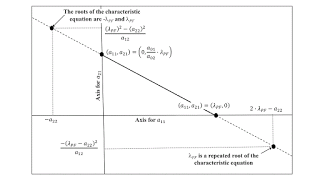Coefficients for First Column in Leontief Input-Output Matrix I have uploaded a draft paper with the post title to my SSRN site. Abstract:This note demonstrates that the special case condition, needed for a simple labor theory of value (LTV), of equal organic compositions of capital does not suffice to determine technology. A model of the production of commodities, with circulating capital and all commodities basic, is analyzed. Given direct labor coefficients and labor values, an uncountably infinite number of Leontief input-output matrices yield the same wage curve under the conditions in which prices of production are proportional to labor values. This paper is an update of a previous draft paper. I have posed the problem better that I am addressing, have deleted an error in my
Topics:
Robert Vienneau considers the following as important: Example in Mathematical Economics, Karl Marx
This could be interesting, too:
Robert Vienneau writes Austrian Capital Theory And Triple-Switching In The Corn-Tractor Model
Robert Vienneau writes Double Fluke Cases For Triple-Switching In The Corn-Tractor Model
Robert Vienneau writes The Emergence of Triple Switching and the Rarity of Reswitching Explained
Robert Vienneau writes Recap For A Triple -Switching Example

|
| Coefficients for First Column in Leontief Input-Output Matrix |
I have uploaded a draft paper with the post title to my SSRN site.
Abstract:This note demonstrates that the special case condition, needed for a simple labor theory of value (LTV), of equal organic compositions of capital does not suffice to determine technology. A model of the production of commodities, with circulating capital and all commodities basic, is analyzed. Given direct labor coefficients and labor values, an uncountably infinite number of Leontief input-output matrices yield the same wage curve under the conditions in which prices of production are proportional to labor values.
This paper is an update of a previous draft paper. I have posed the problem better that I am addressing, have deleted an error in my previously most general formulation, replaced the numerical example by algebra, and shortened my paper. I hope I am not restating something that I did not absorb decades ago in reading John Roemer or Michio Morishima. As of today, I think I am subjectively original.
 Heterodox
Heterodox
